Is It Easy, Embroidering Heaven?
Photogallery
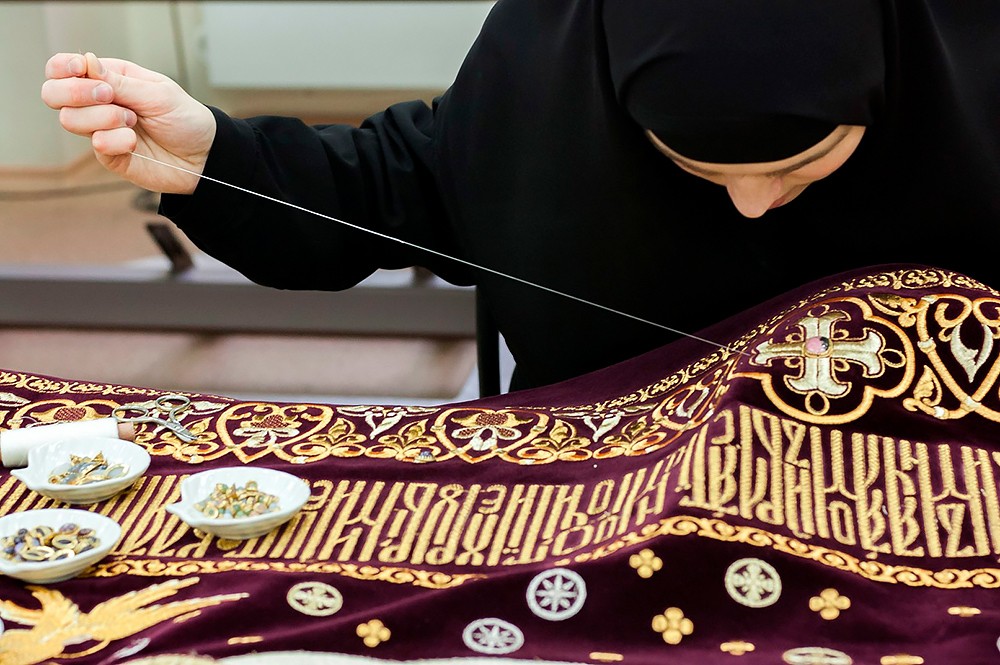
How is church embroidery created? It is an enormous labor, the complexity of which can be probably compared with the creation of a film: Many people participate in the making of it, and both technology and masterful hands are involved. This photo-story was given to Pravoslavie.ru by the sisters of the embroidery workshop of the St. Alexander Nevsky New Tikhon Convent in Ekaterinburg, Russia.
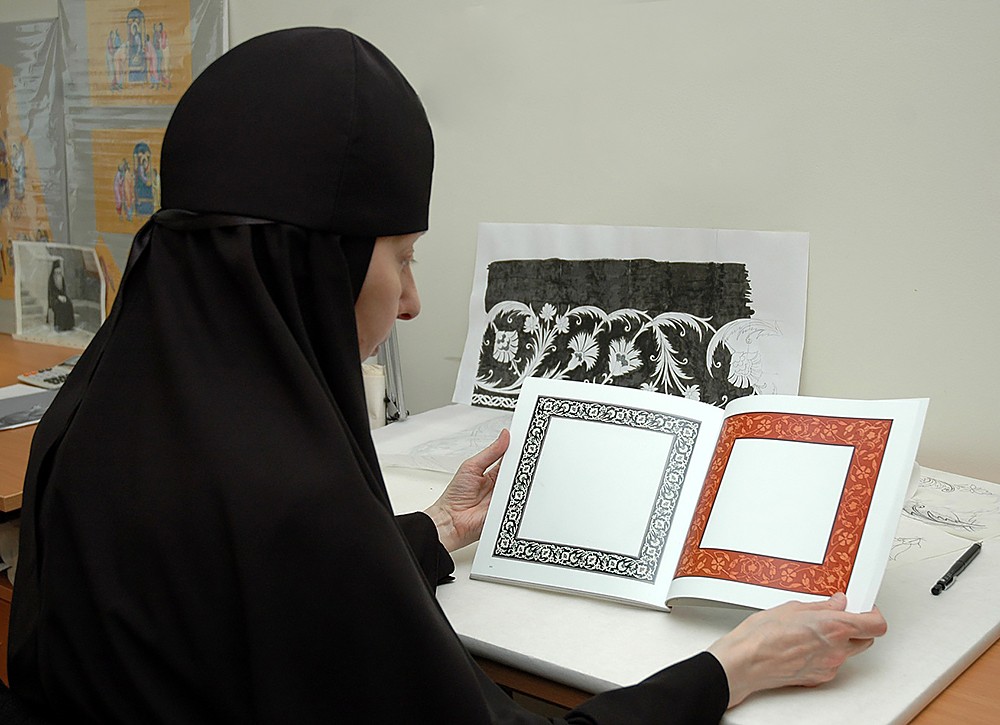
It all begins of course with the search for an idea. Every vestment, epitaphion, or any other product is a miniature depiction of the spiritual world. And all of its details should be chosen very scrupulously. The sisters look through many different patterns, ornaments, and icons, which can be used to create the composition.
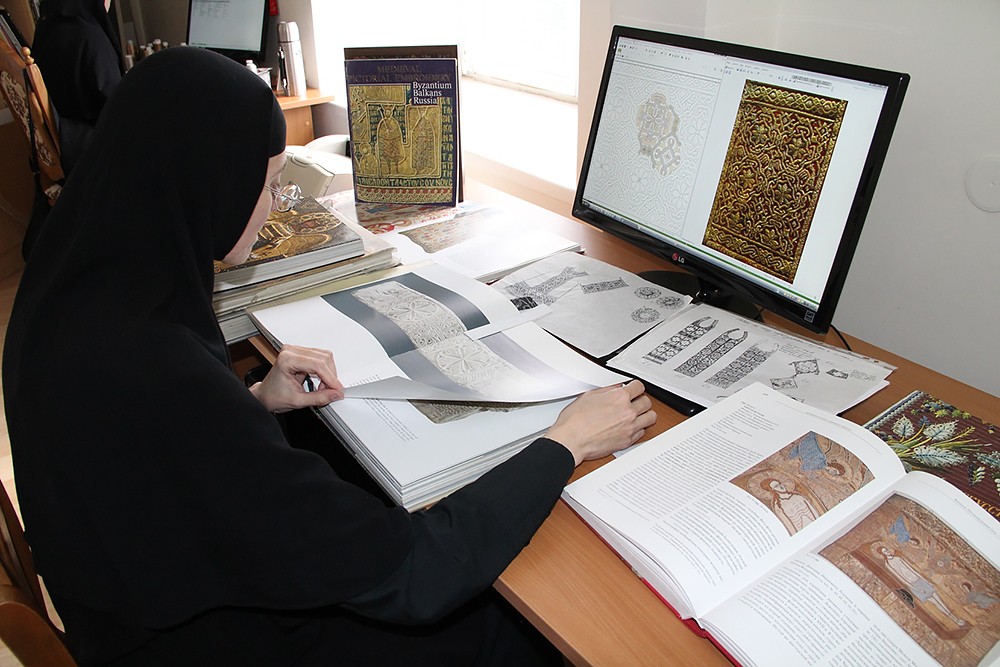
Serving as sources are books with ancient Russian and Byzantine ornaments, with Athonite and other Greek miniatures, albums with reproductions of icons from the 11th – 15th cc—the blossoming of Russian and Byzantine iconography. Gradually a unified plan emerges…
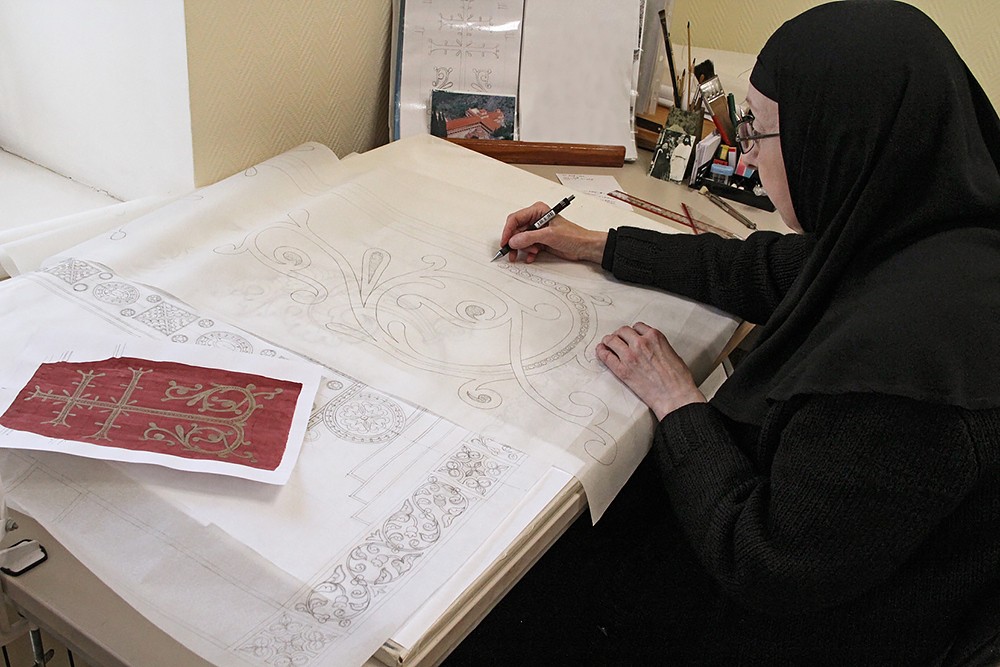
The sisters make drafts of separate fragments, and then a draft of the product in total. Refined artistic taste is needed for this work, the knowledge of Church tradition, and the ability to understand and discriminate between styles of various periods. Sometimes a pencil sketch is drawn at the beginning of the work. Each sketch—both of the individual fragment and of the product as a whole—is always reviewed by the sisters of the iconographic workshop. Their advice is very important to the embroiderers.
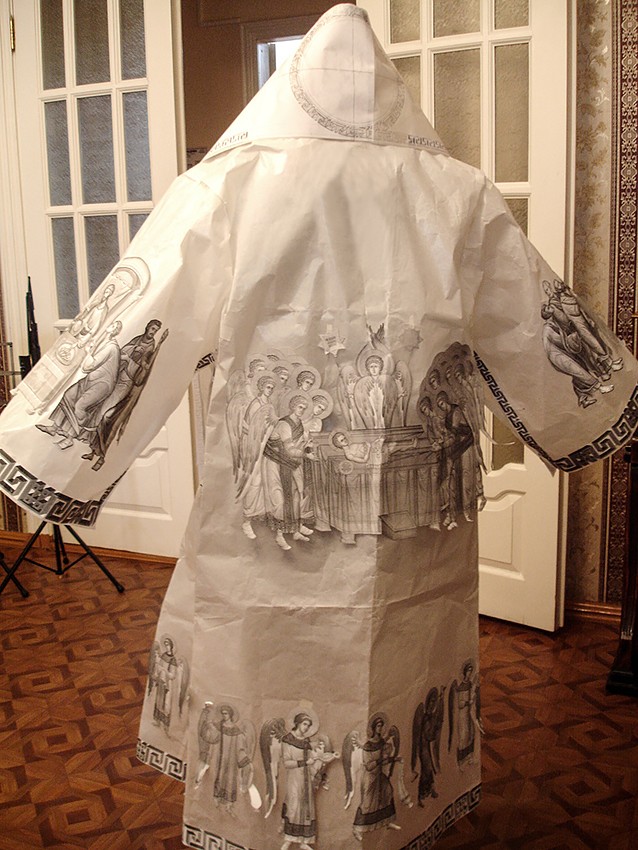
The sisters made this paper mock-up of a set of vestments in order to view the general composition of the piece. This was good experience for them, and a great help in their further work on the vestments.
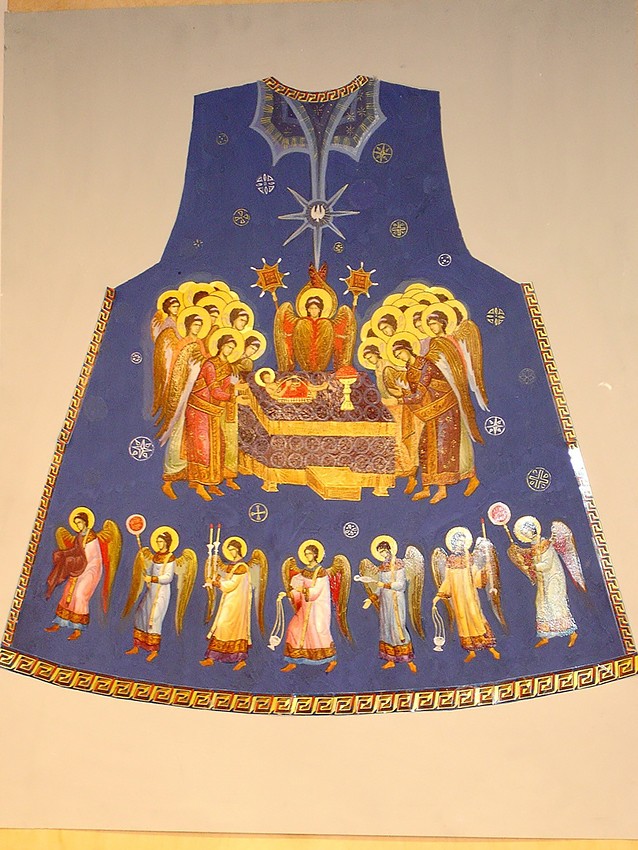
After the tonal decision has been made, the sisters set to work on the color draft. In order to work out the draft, special talent is needed—the ability to select colors that harmonize. This is one of the first color drafts of the vestments called, “Liturgy of the Angels”. Its idea is to replicate the ancient frescoes that were often painted on a blue background. However, not everything drawn on paper turns out as well on cloth. Several other color drafts were made after this one.
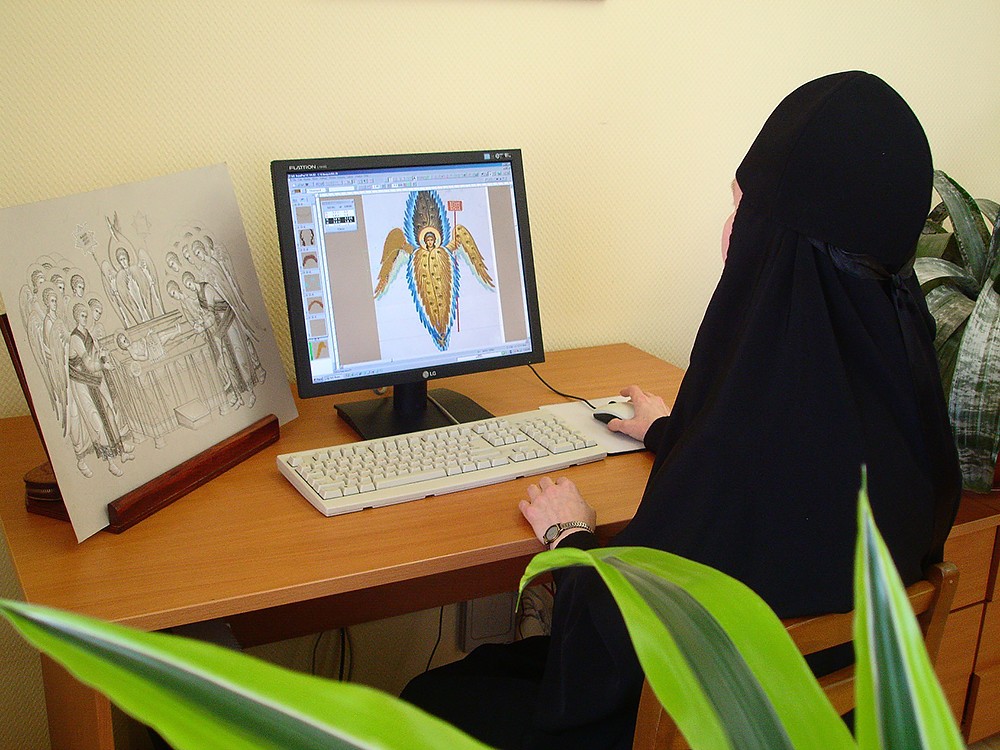
When a precise drawing of the product with a complete rendering of all the details has been made in its natural size, it has to be “embroidered” on the computer—that is, it has to be digitized for embroidery machine.
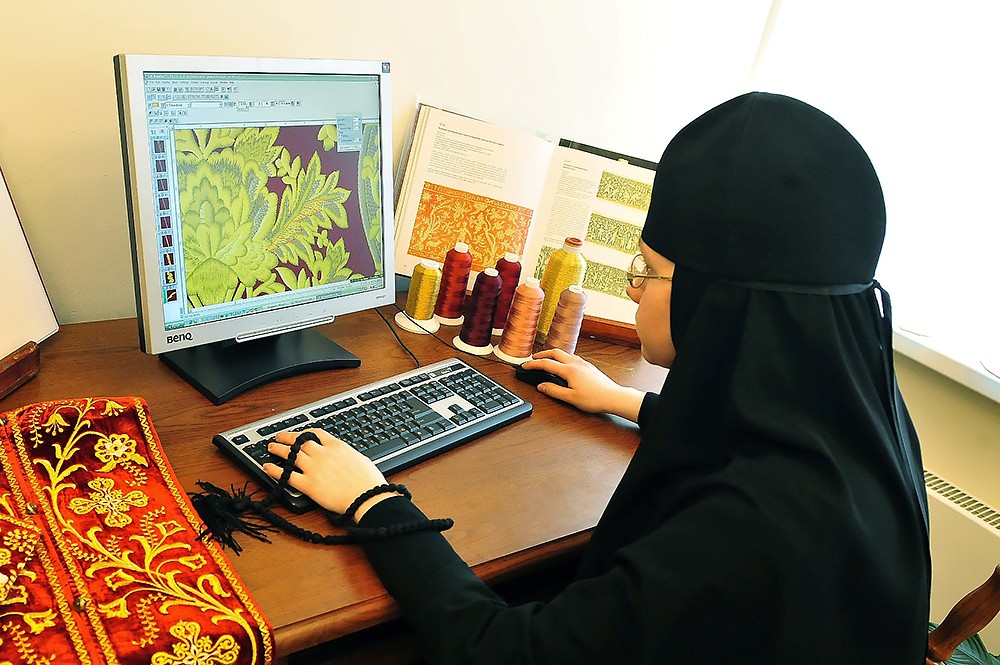
The sister sitting at the computer is literally embroidering the vestments, only not with a needle but with a computer mouse. For this she had to master not only modern computer embroidering technology but also be, first and foremost, a skillful embroiderer who knows all the various applications of manual embroidering. She has to embroider every stitch, fix various directions of the threads in different fragments, know various embroidery methods, thicknesses, and so on. Often in order to achieve the right color effect, the stitches are made in several layers, just as in iconography paints are applied in layers. Furthermore the sister who creates the program should assign the needle number, color, and thread brand for every fragment. She also assigns the sequence in which the fragments will be sewn—for example, the embroidery machine sews several elements, and then stops sewing; they change the threads, the needles, the settings, readjust the frames; then the machine sews the next fragment; again the threads are changed, and so on.
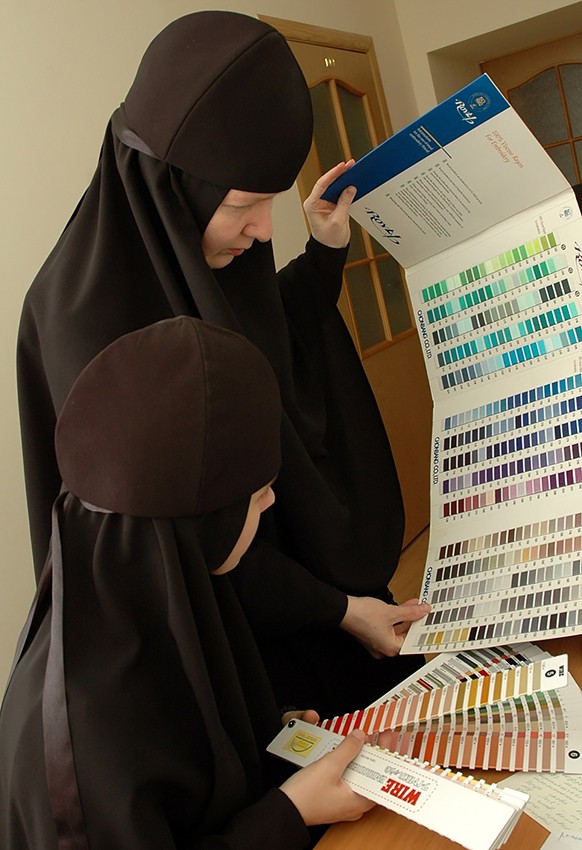
In parallel with the digitizing, the sisters select the colors of the threads. Hundreds of different shades are used in embroidery. Nevertheless, it sometimes happens that a thread cannot be found to precisely correspond with the color in the draft. Then the right color is achieved through layering the threads, thinning them, or to the contrary, thickening the stitches.
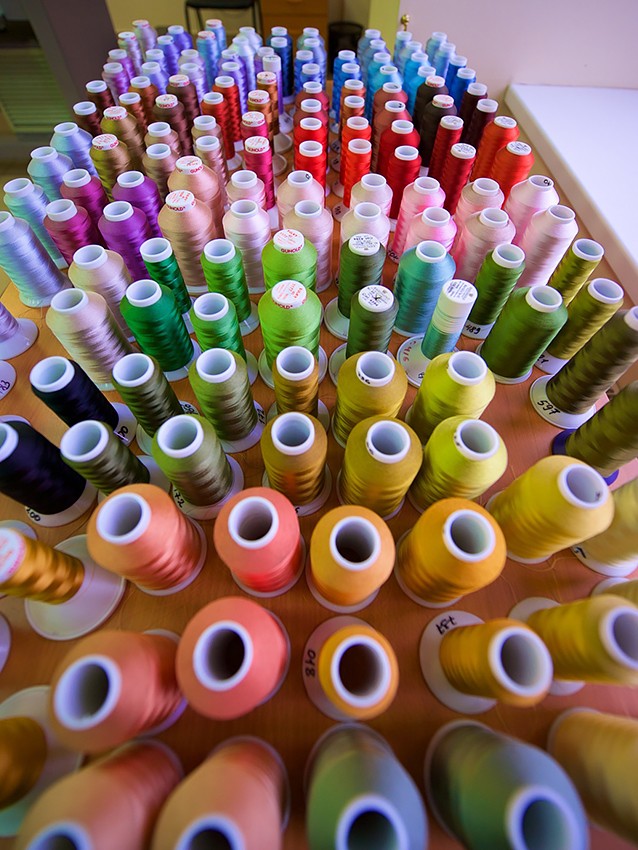
In parallel with the digitizing, the sisters select the colors of the threads. Hundreds of different shades are used in embroidery. Nevertheless, it sometimes happens that a thread cannot be found to precisely correspond with the color in the draft. Then the right color is achieved through layering the threads, thinning them, or to the contrary, thickening the stitches.
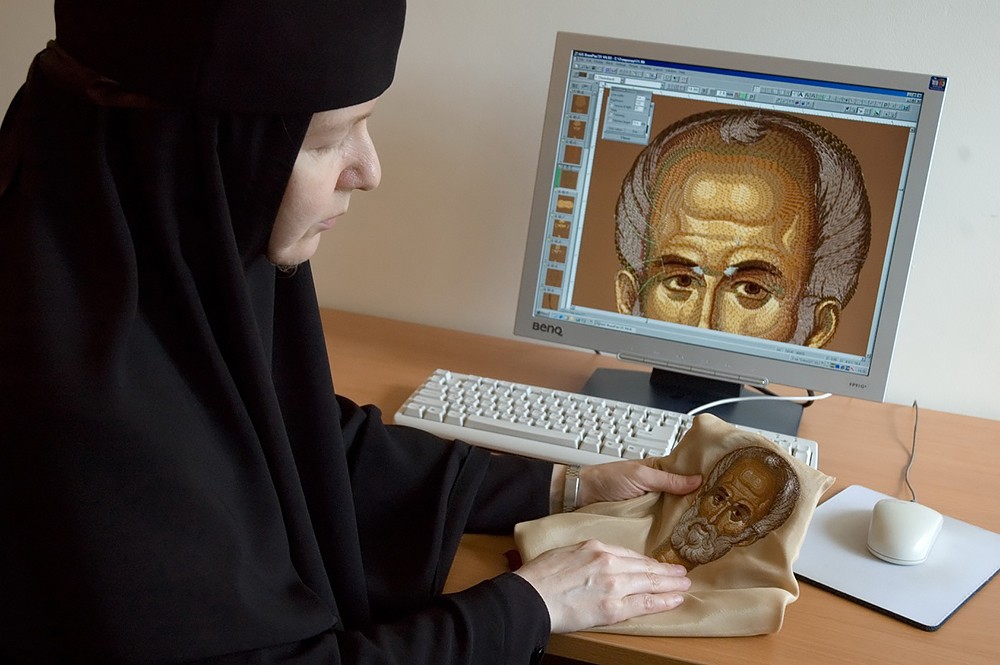
Before embroidering the product, a test piece must be made without fail. The test piece may turn out to differ in appearance from what is on the screen. For example, on the cloth the stitches might come out a little further apart, and cloth can be seen through them. In this case something has to be changed in the program—the stitch thickness or direction.
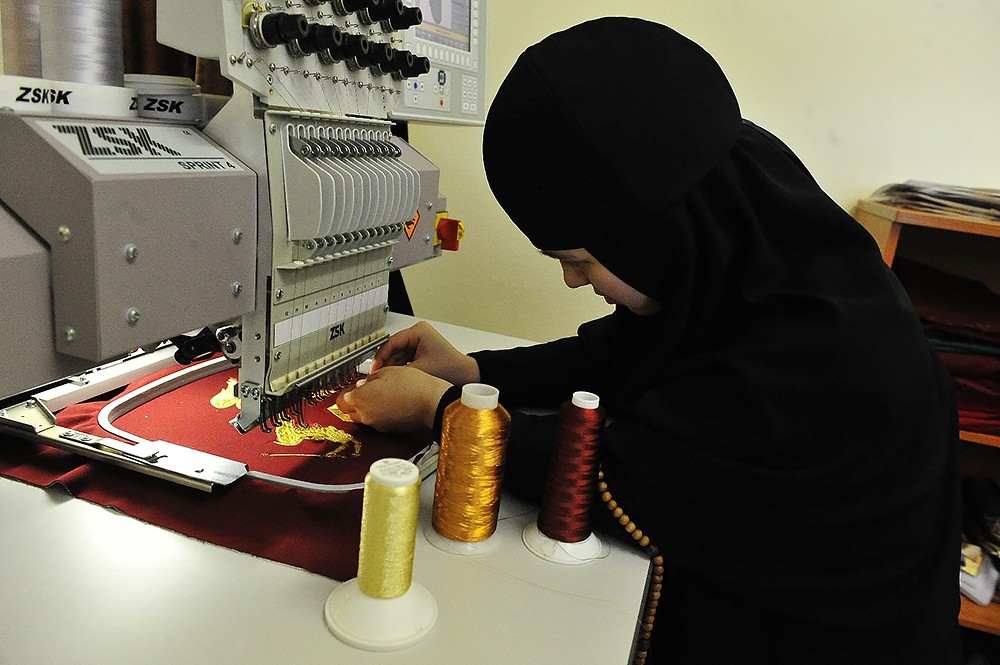
The samples are embroidered on this smaller machine. In this photograph, the sister is embroidering a fragment of the vestments with an icon of the Cherubim (you can see the embroidered hand of the Cherubim holding a candle). Sometimes a large sample is formed out of these samples like patches, so that they can get an idea of how the product will look as a whole.
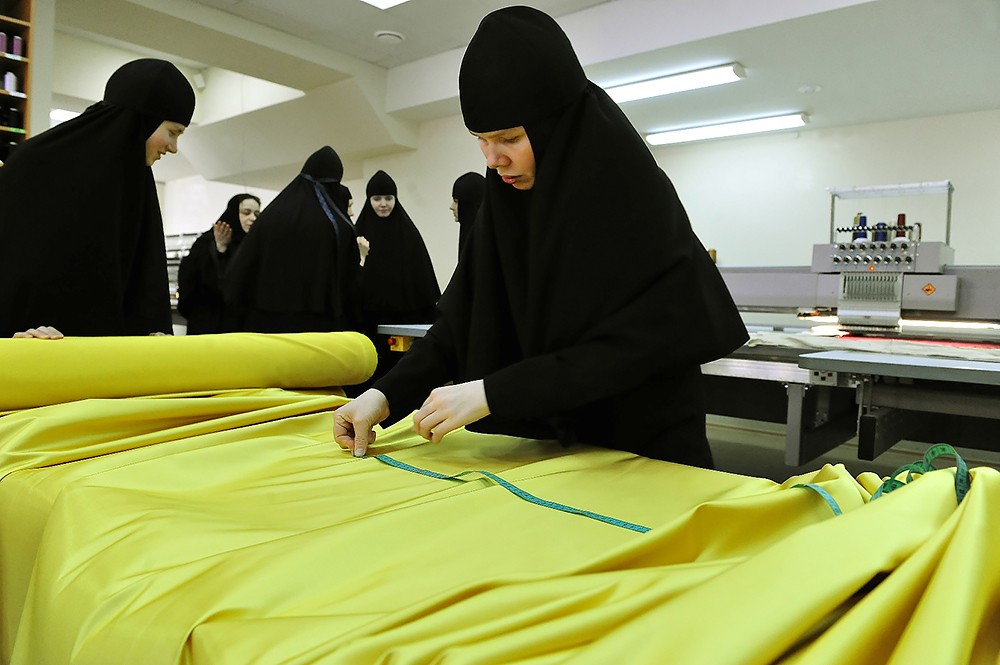
Solid colored cloth is used to make embroidered products. After measuring the yardage of cloth required, backing is applied so that the cloth will not stretch and the stitching will not skip.
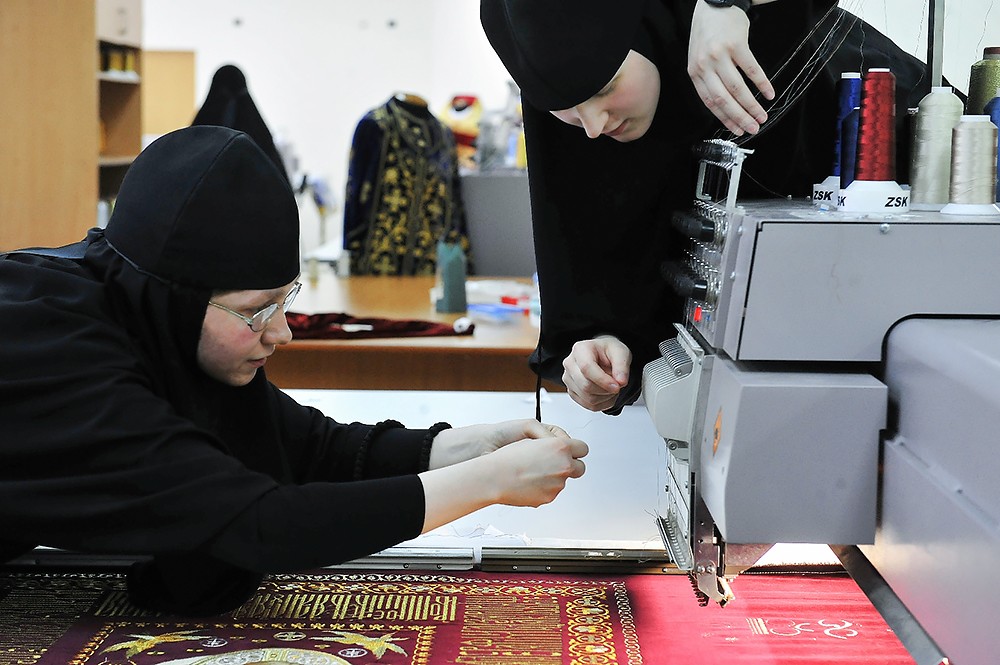
The sisters thread the needles. This is difficult to do alone, and the sisters help each other. No fewer than two hours go into threading the needles on an eight-needle machine.
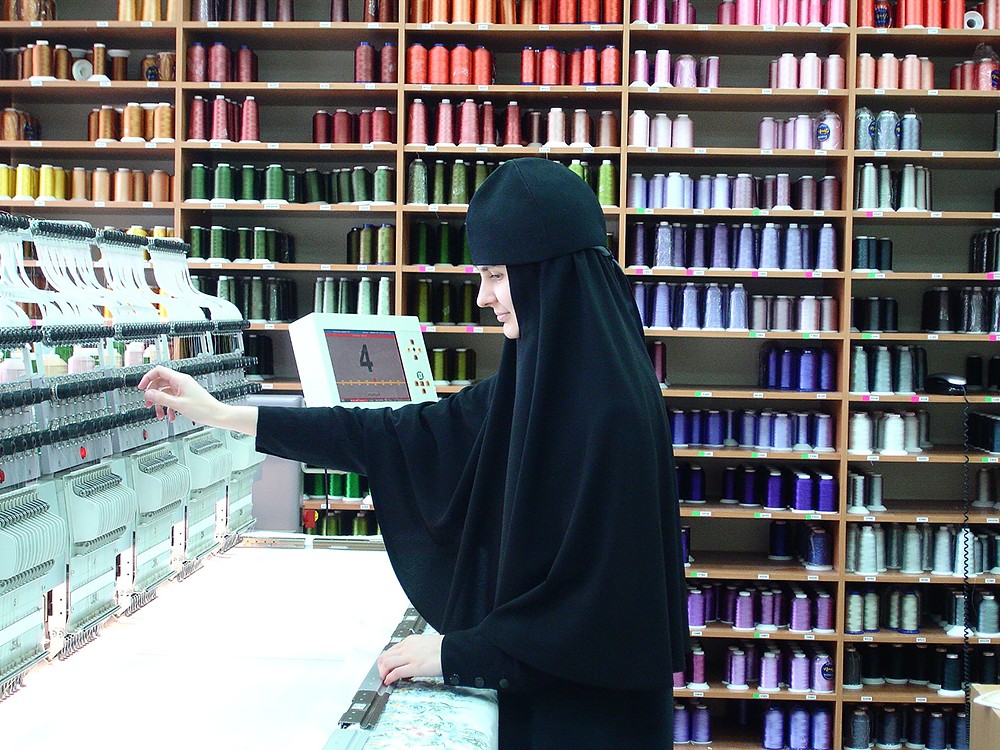
While the embroidery is being done, the embroiderer does not leave the machine. There is a widespread misconception that the machine does all the sewing itself, and you only have to press a button. This is not at all the case. Just as in hand-embroidery, machine embroidery requires talent, skill, and experience. Every machine head stitches in its own way—for example, one might “like” to have its needle at one angle, while another “prefers” another angle. Upon the embroiderer’s skill depends whether the embroidery will turn out “loose” or whether it will be smooth and accurate, just like a painted picture.
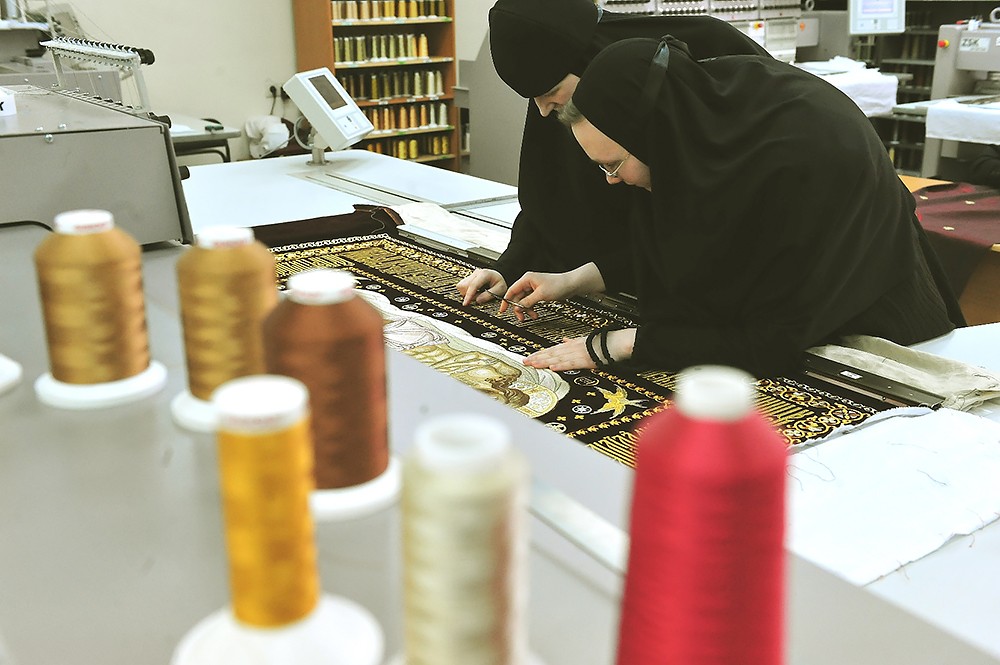
The sister has noticed a defect in the embroidery due to a wrong thread tension, and loops have formed in the stitches. The sisters fix the sloppy stitches.
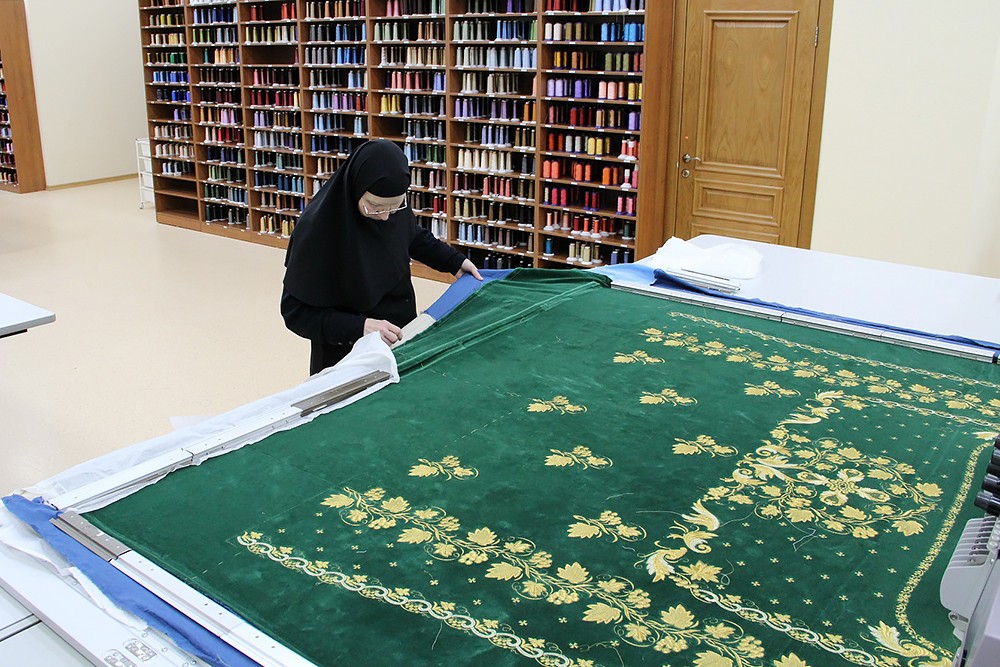
Hardest of all is embroidering a large product. The field of the embroidery machine is no more than 1.3 meters in length. And, in order to embroider a two-meter product—for example, an epitaphion or felonion—they must embroider one part first, and then reframe (move the cloth in the embroidery frame and fix it there again). It is a particular art to stabilize the product so that the stitching will not go off track even for a tenth of a millimeter and that separate fragments would unite into one whole. To do this you have to, as the old Russian saying goes, “measure seven times” (or more exactly, twenty times), and turn on the machine once. In this photograph: The upper portion of a felonion is embroidered, the shoulder piece with the cross; the sister is reframing the cloth to embroider the next fragment.
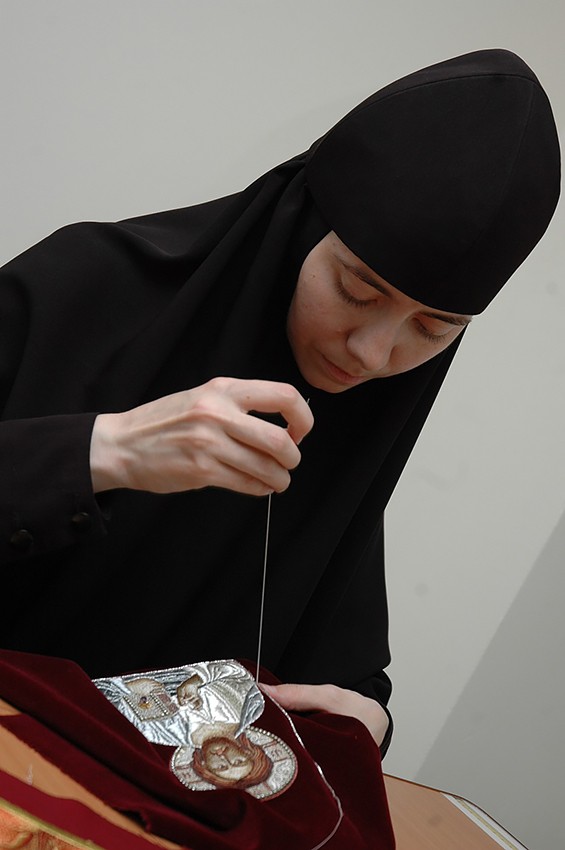
After the product has been embroidered overall, the sisters have no little handwork left to do. This sister is decorating the embroidered icon with silver threaded filament. The sisters strive to do all their work with ceaseless prayer.
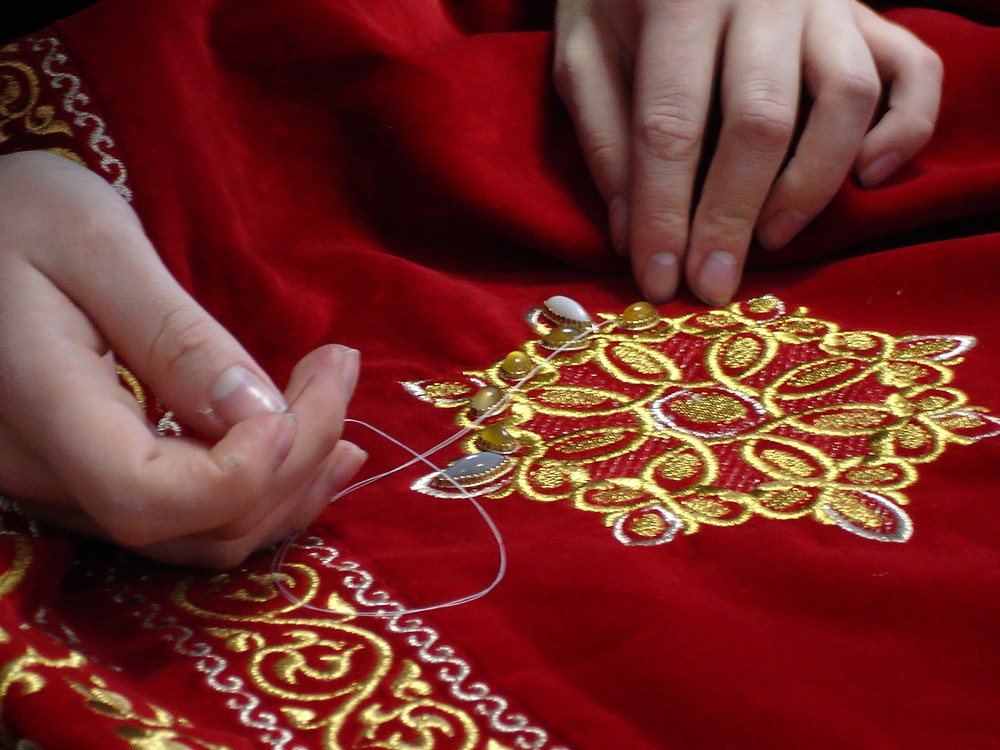
The stones are selected to match the tone of the embroidery on the vestments and are placed by jewelers in settings of the necessary size and shape, to match the embroidery.
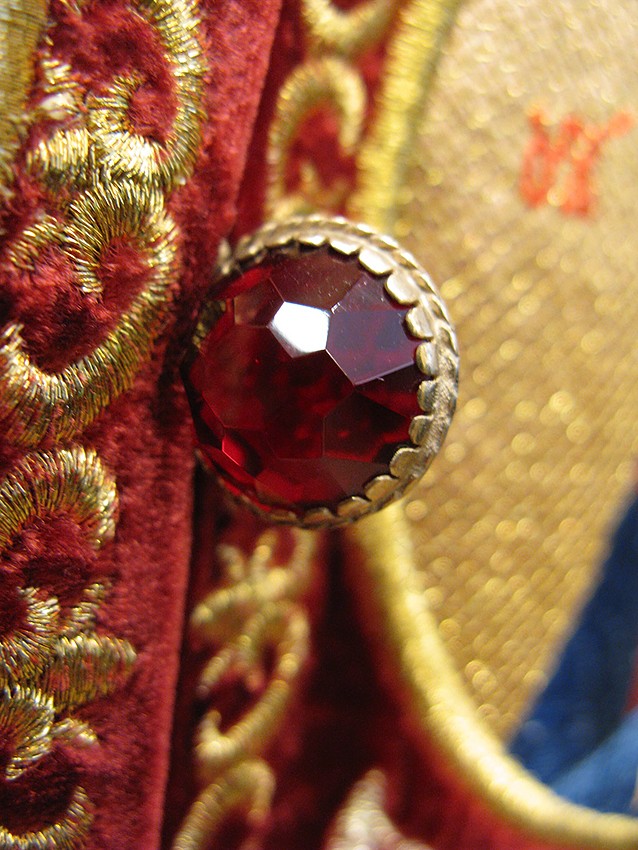
The stones are selected to match the tone of the embroidery on the vestments and are placed by jewelers in settings of the necessary size and shape, to match the embroidery.
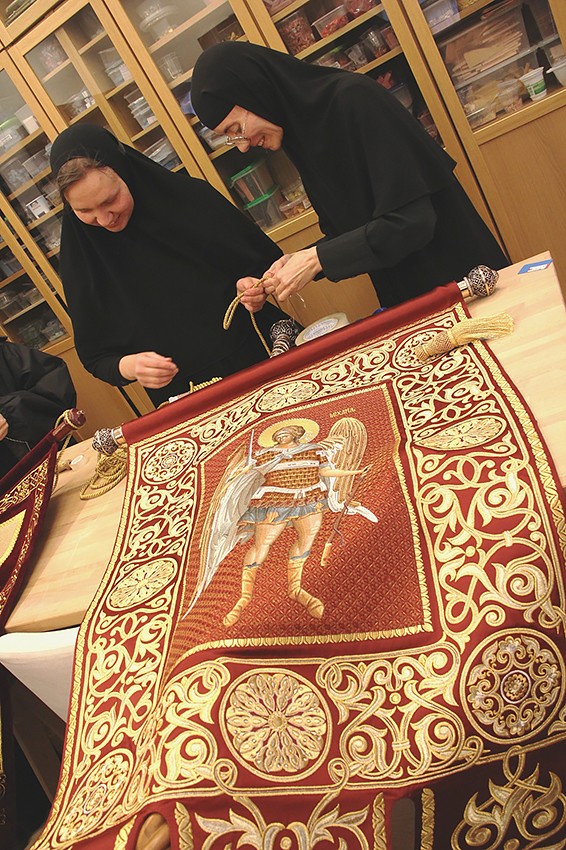
The sisters attach the embroidered banner to the wooden rods. On the banner is embroidered an icon of the Holy Archangel Michael.
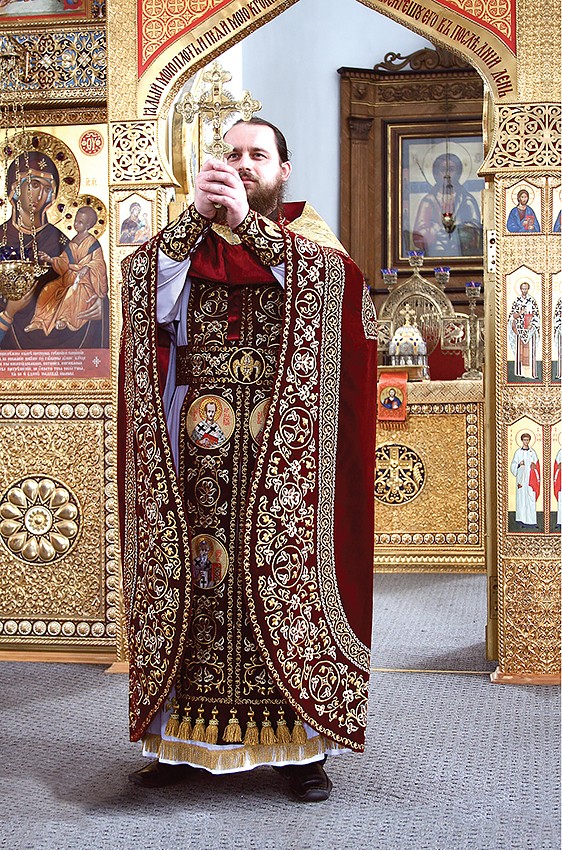
It’s an amazing feeling when you see the incarnation of what you have been working on for many months—searching for the right form, content, and color. It was all on paper, as if it weren’t real, and suddenly it takes on volume and becomes real. And how can we briefly describe what embroidery is? It is many days of scrupulous work by a whole team of embroiderers. What inspires us in this work? The thought that these things, like everything in the Orthodox Church, are a reflection of another, spiritual world.

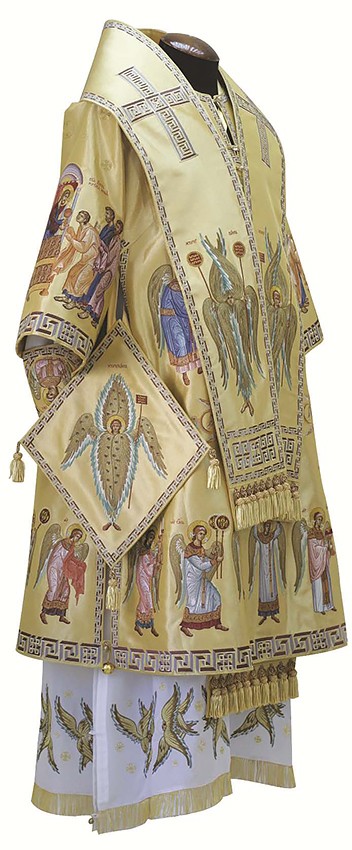
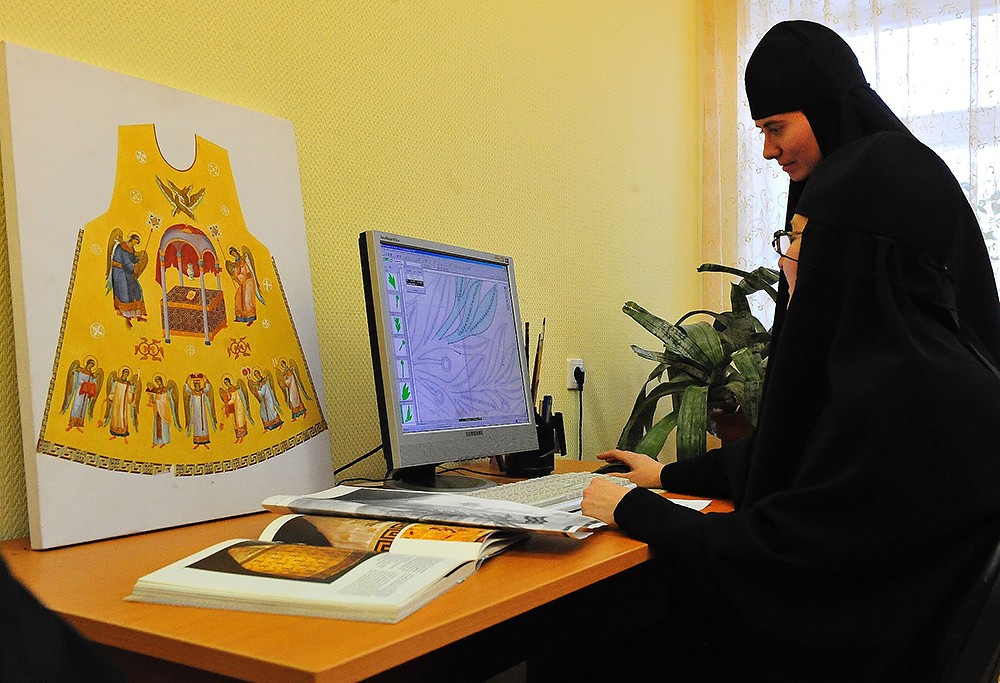
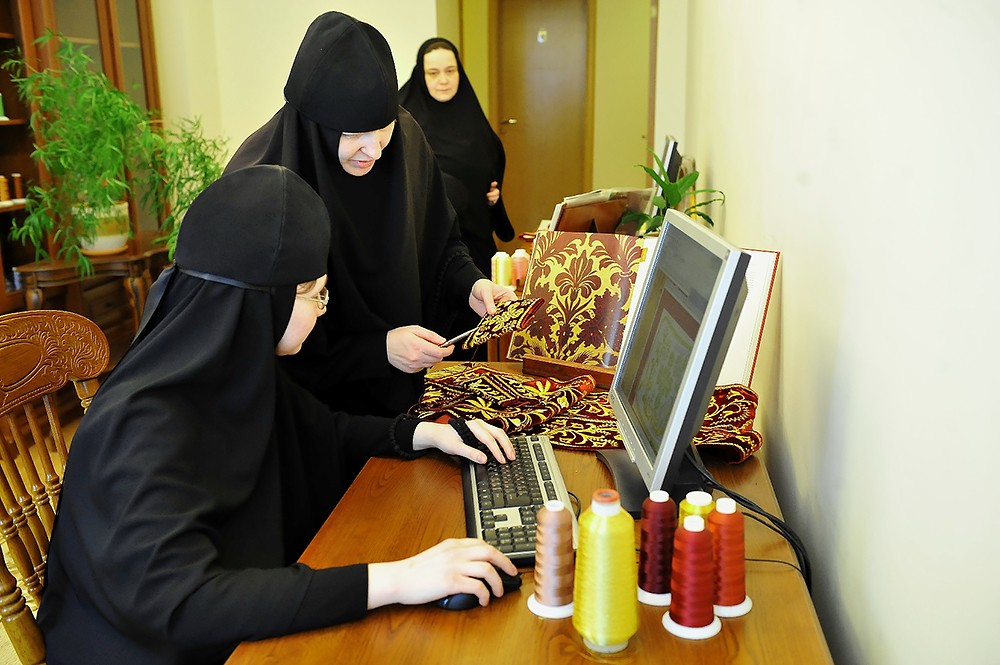
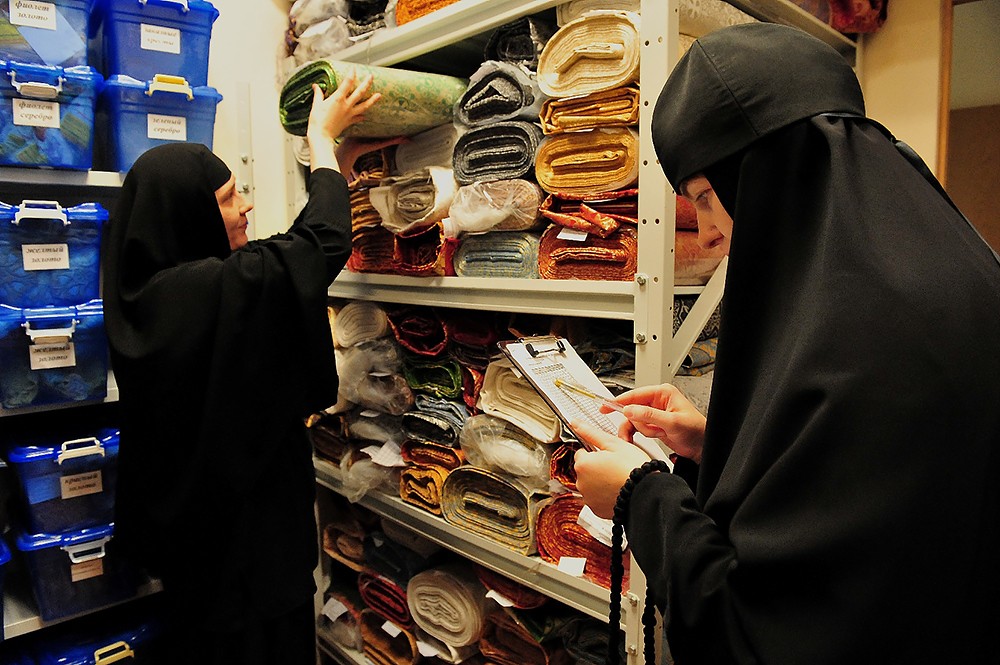
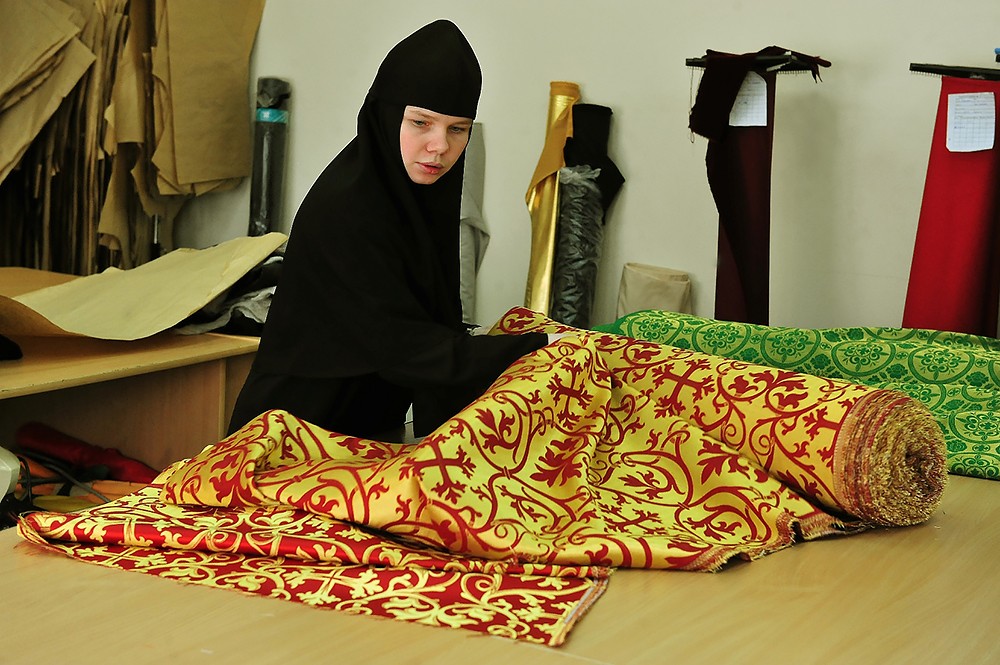
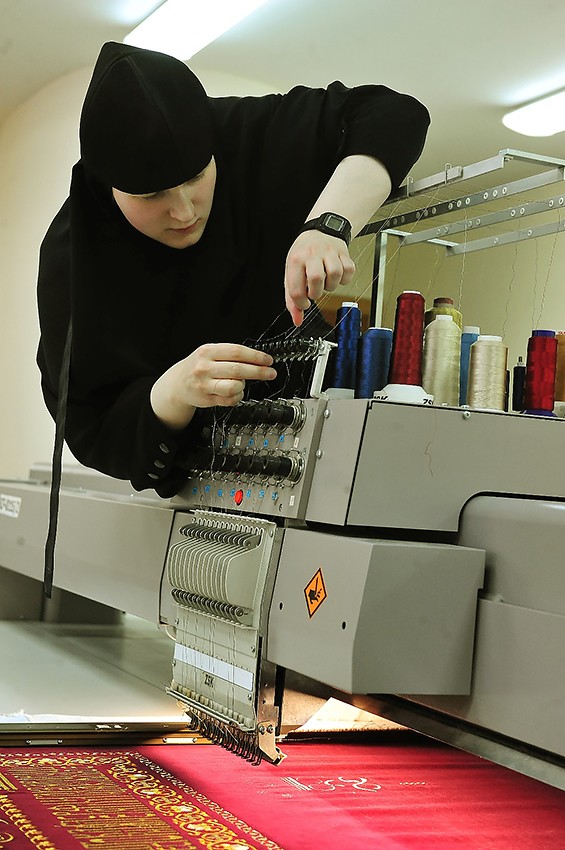
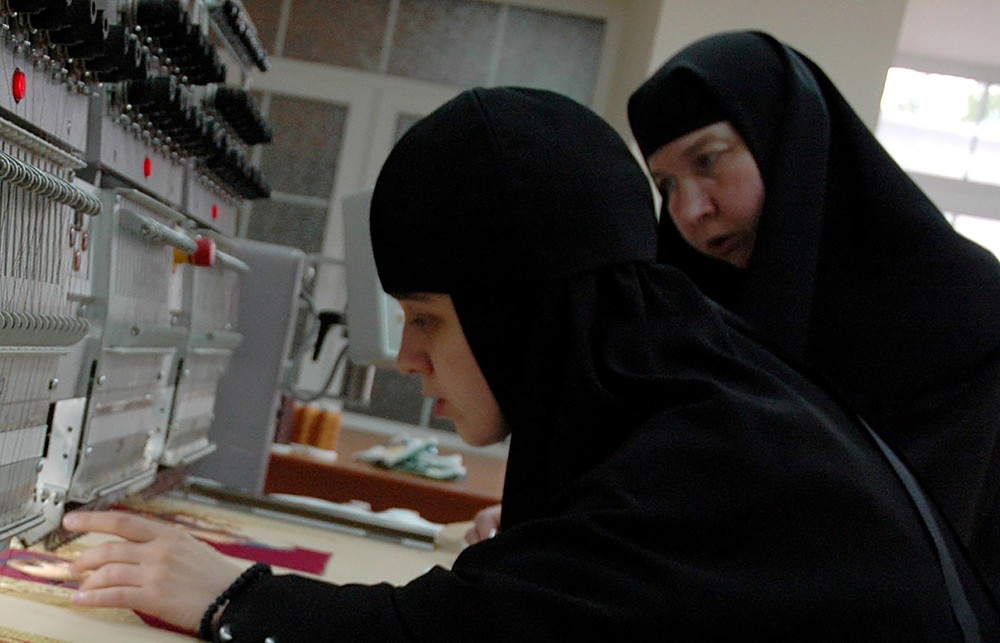
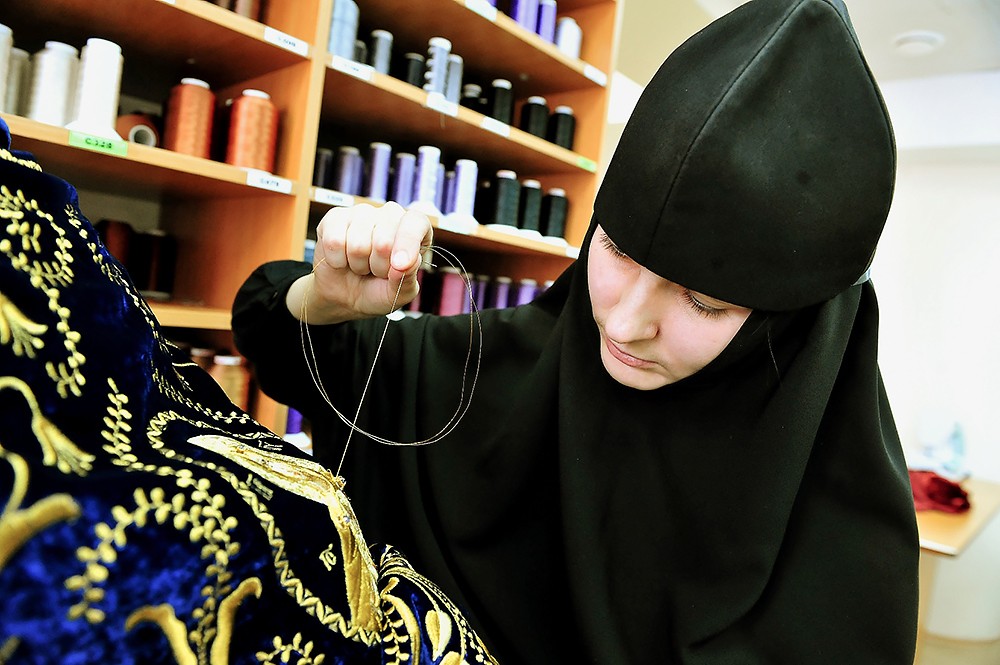
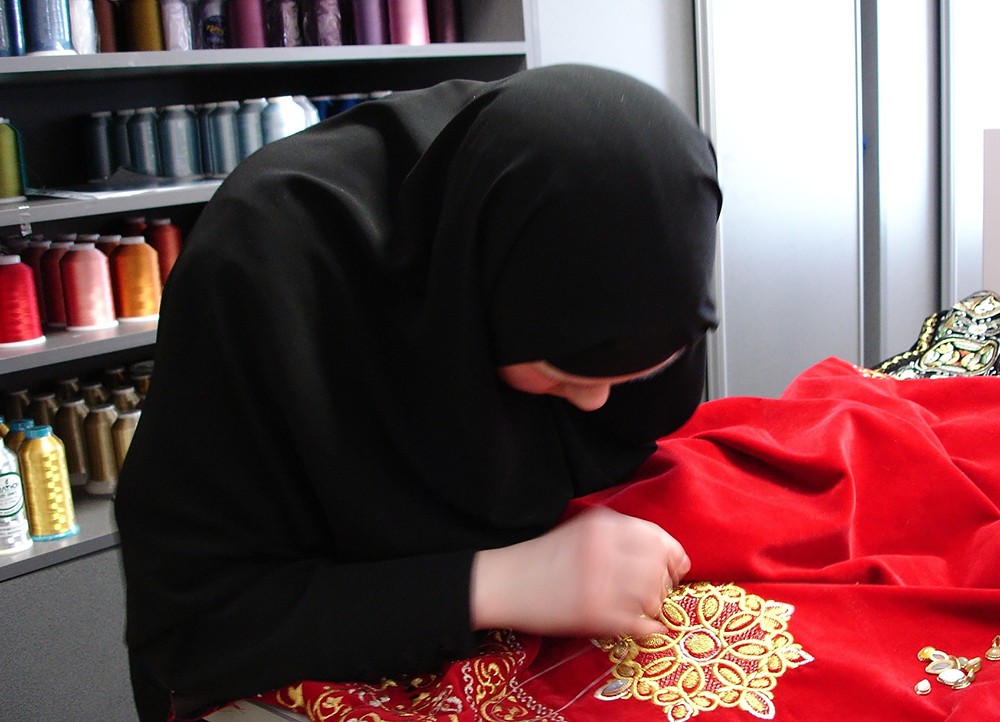
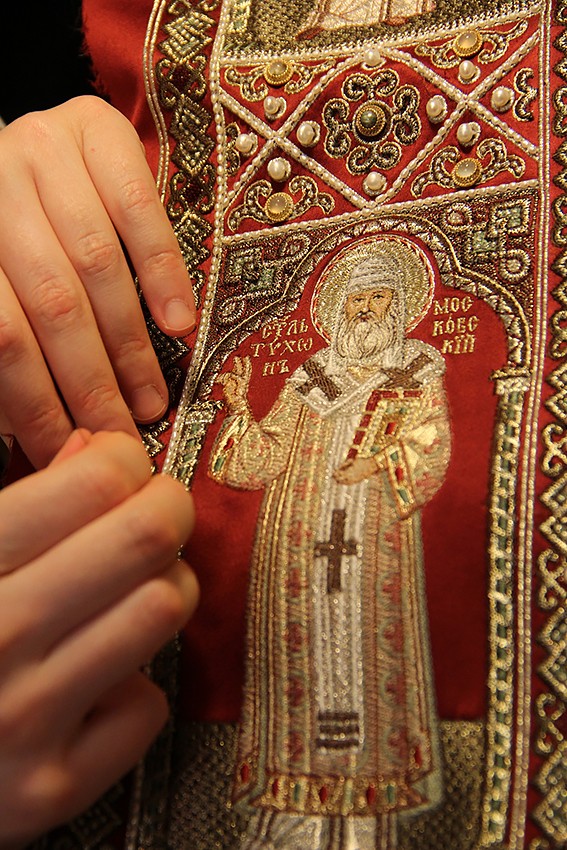
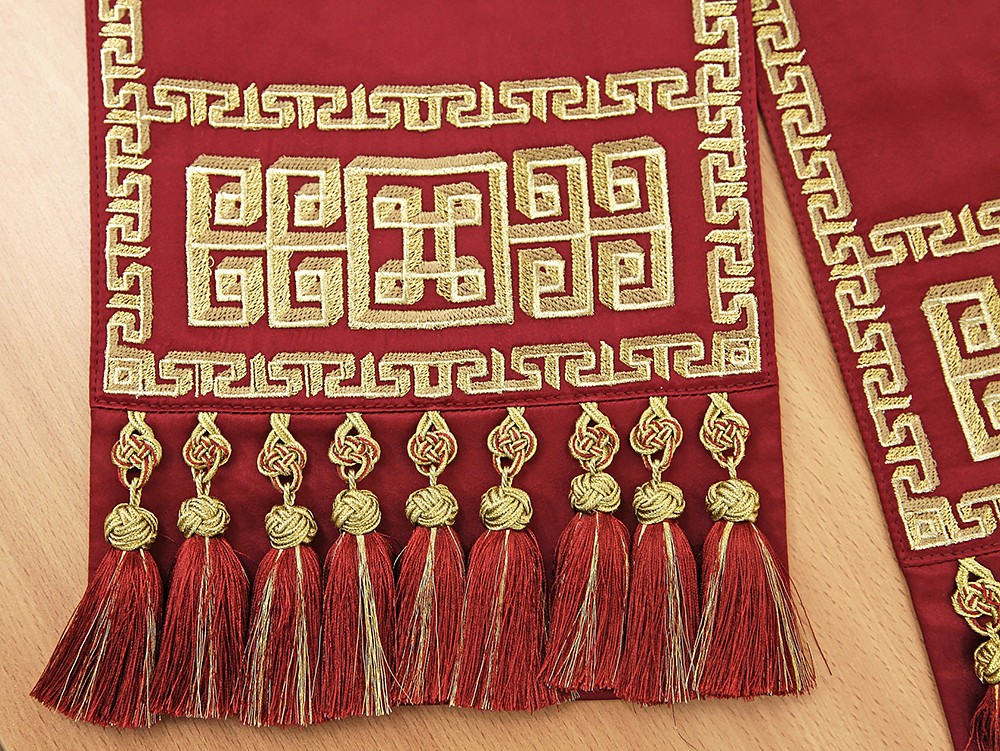
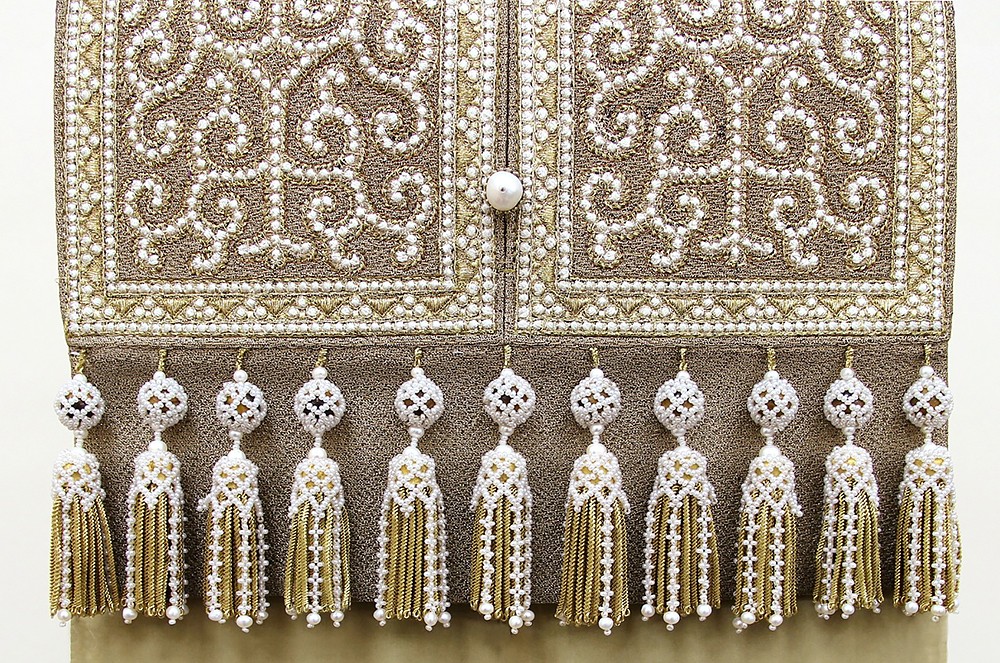
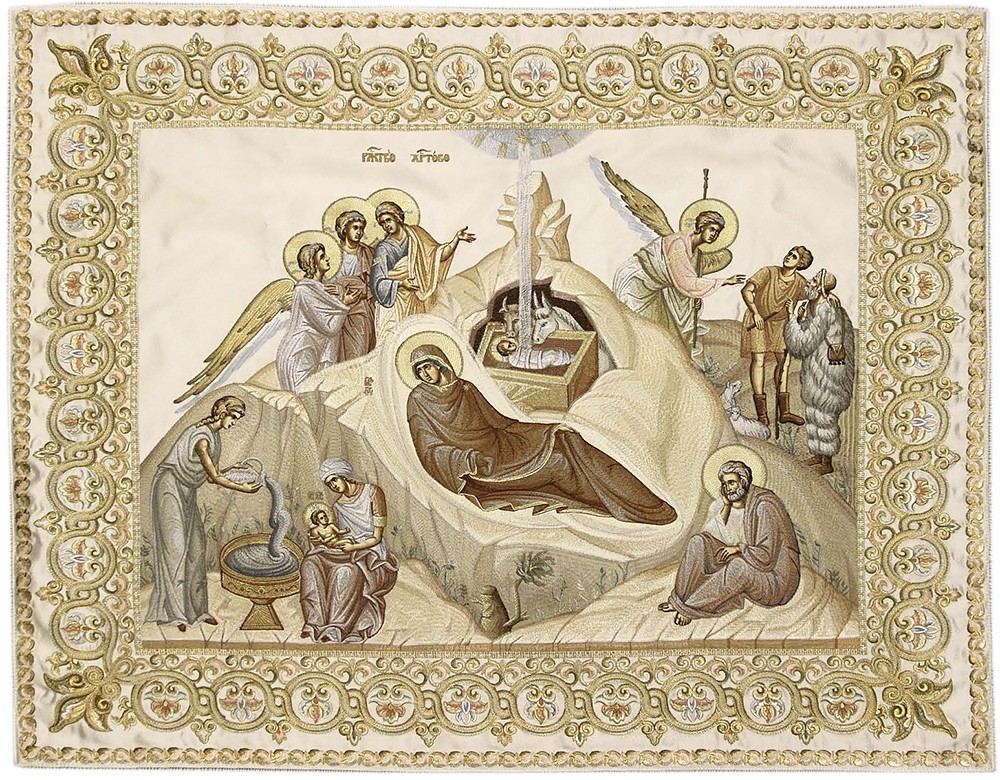
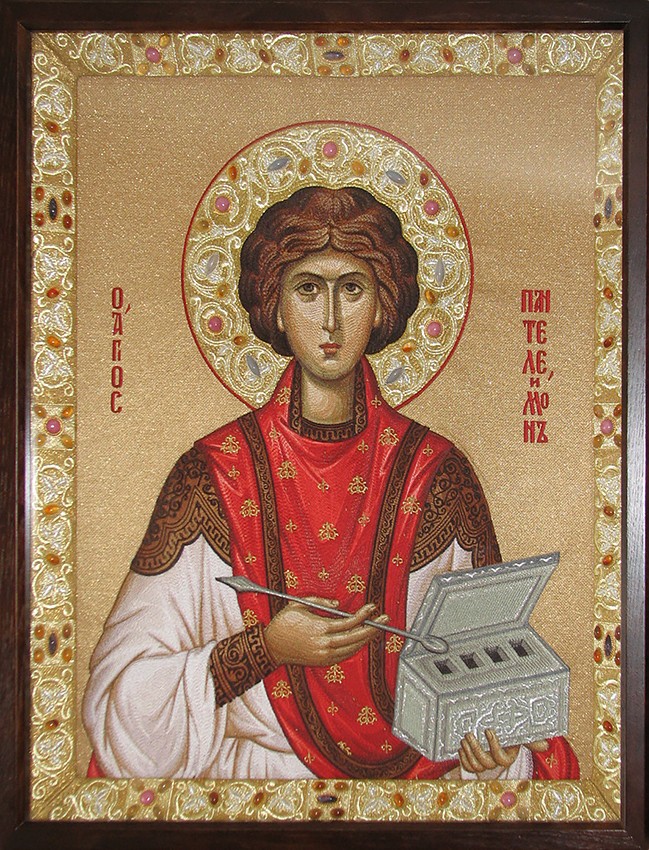
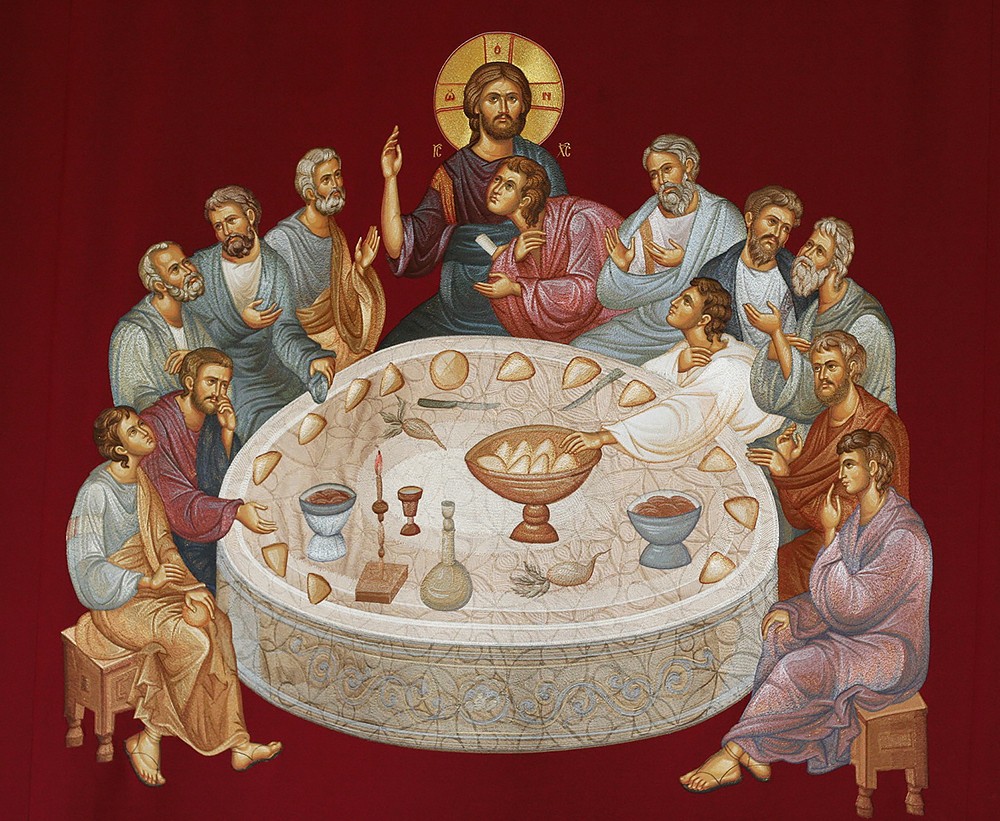
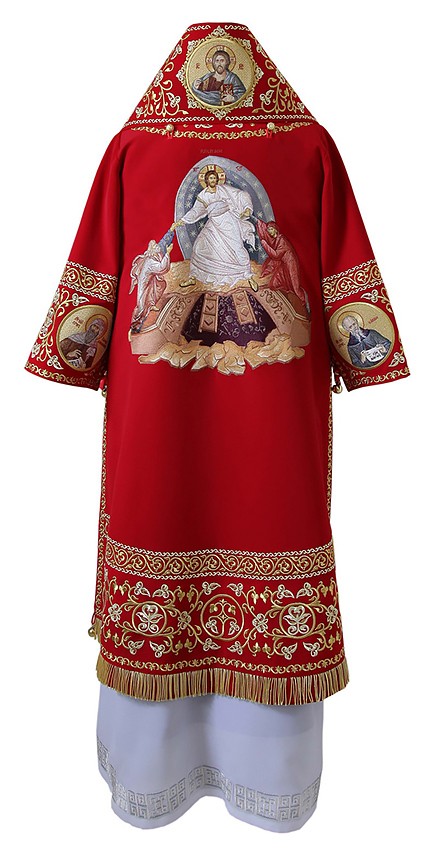
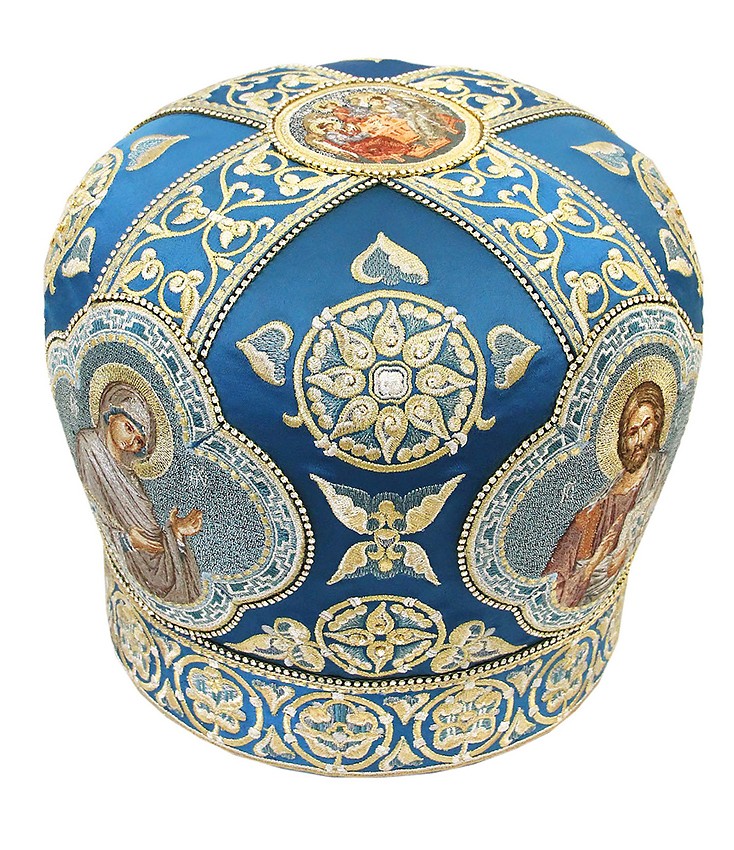
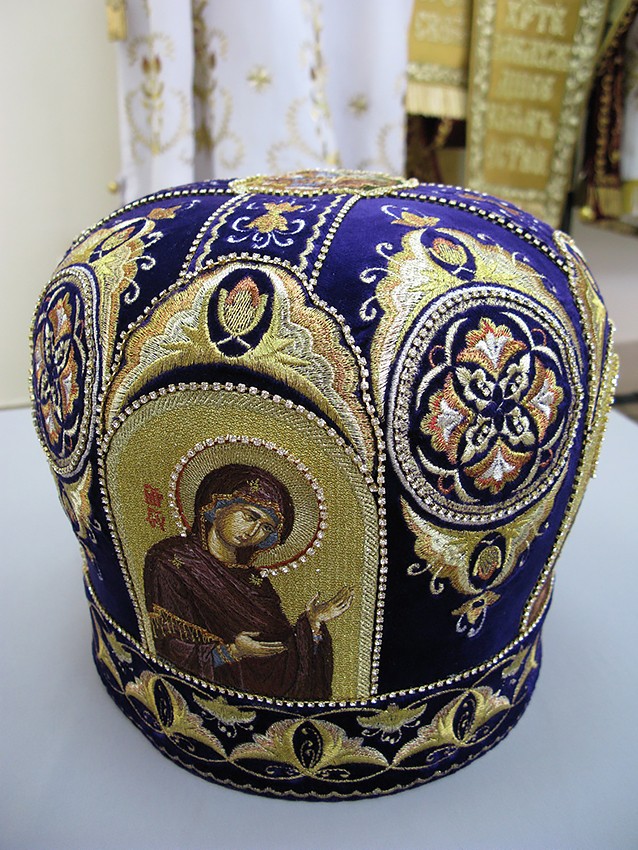
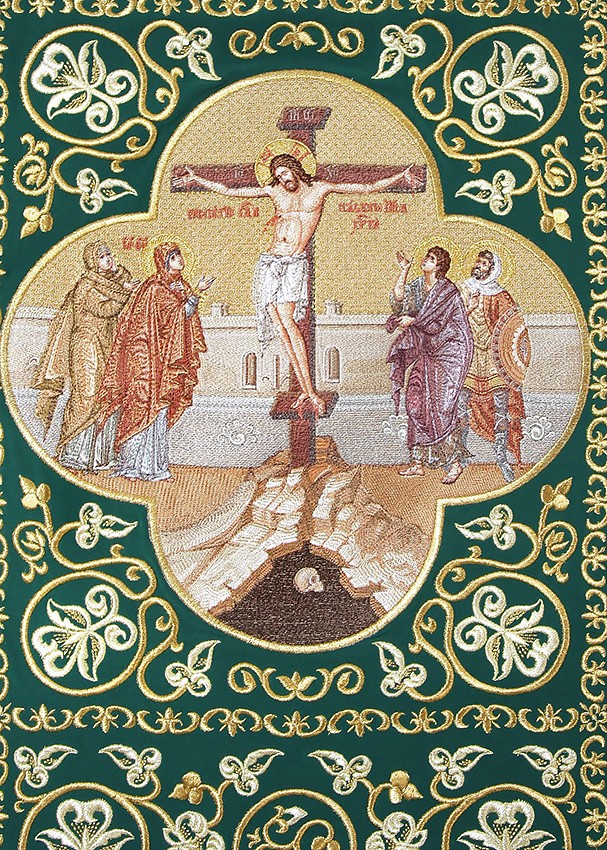
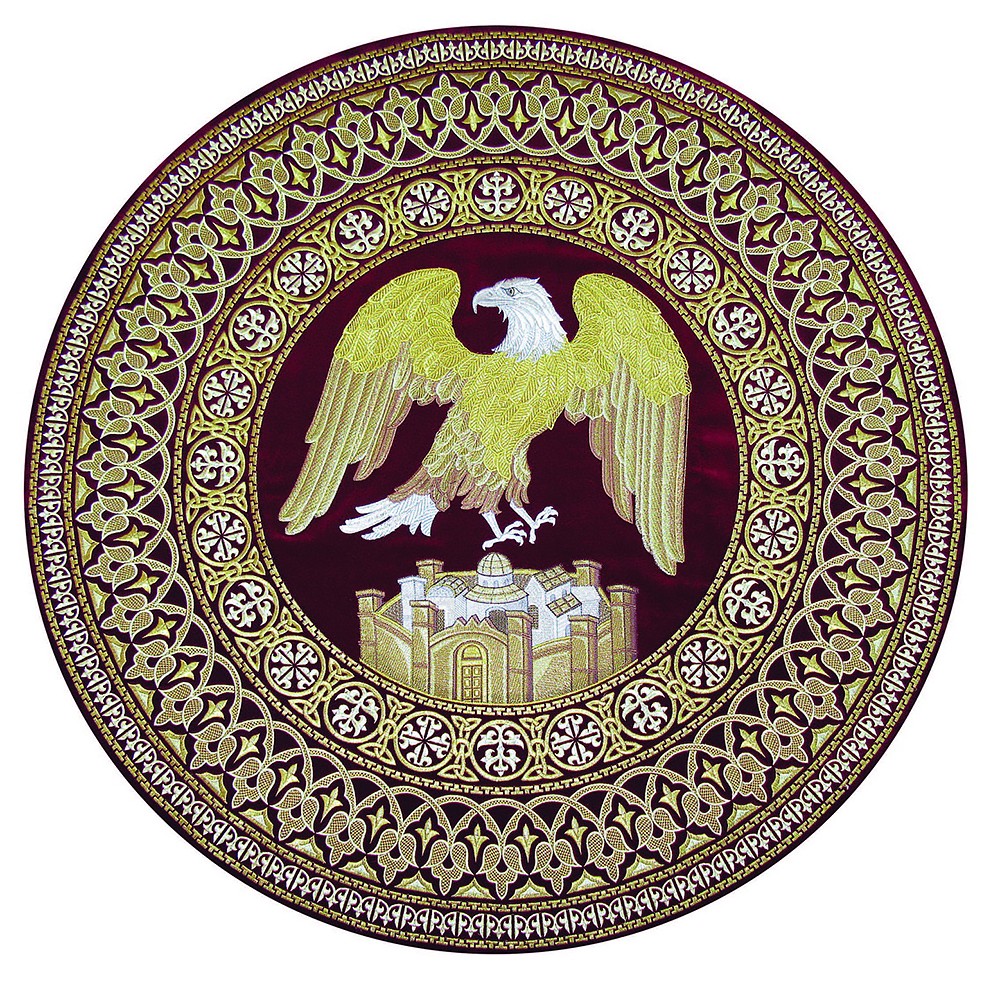
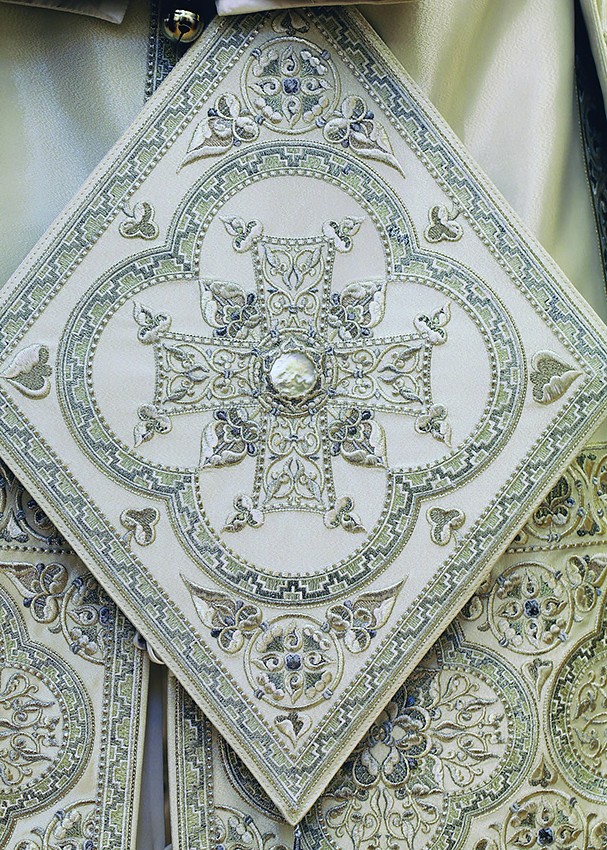
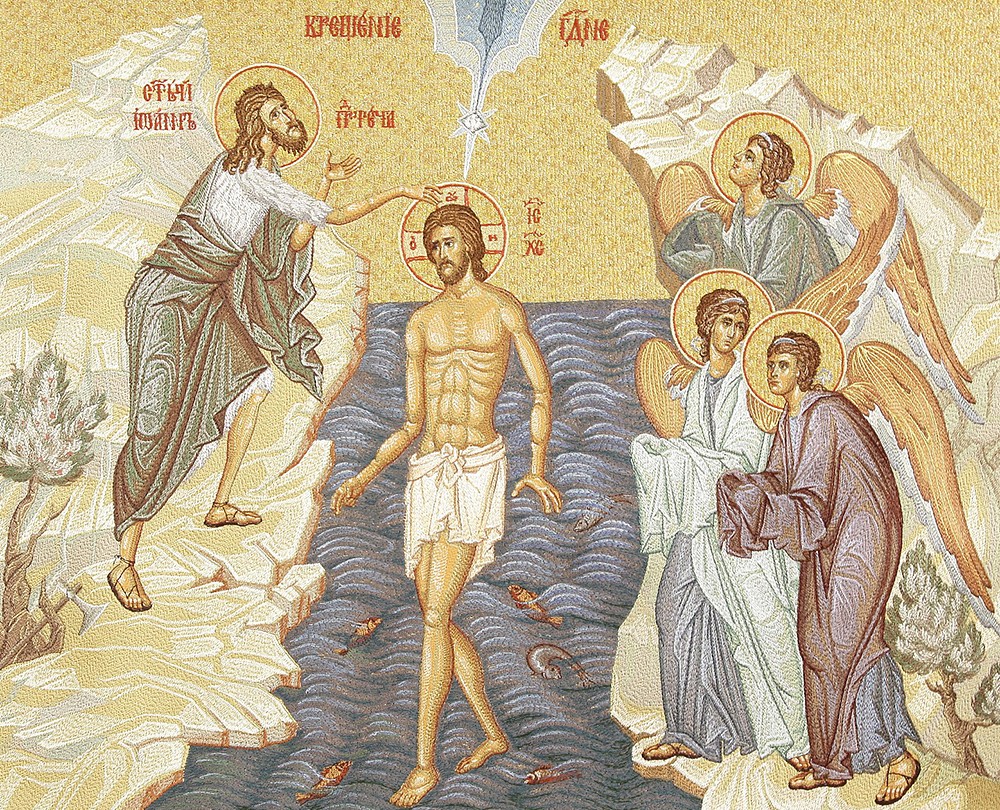

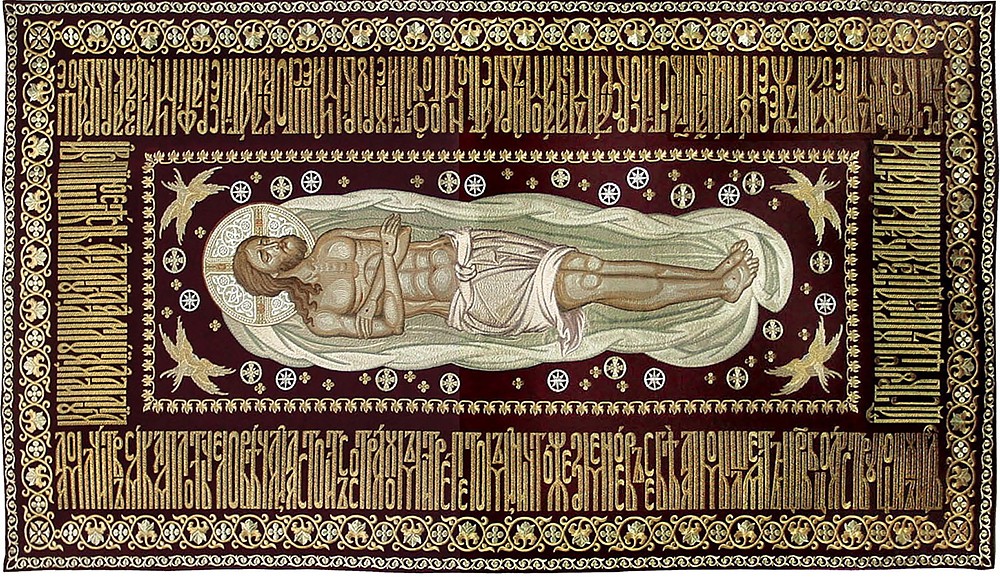
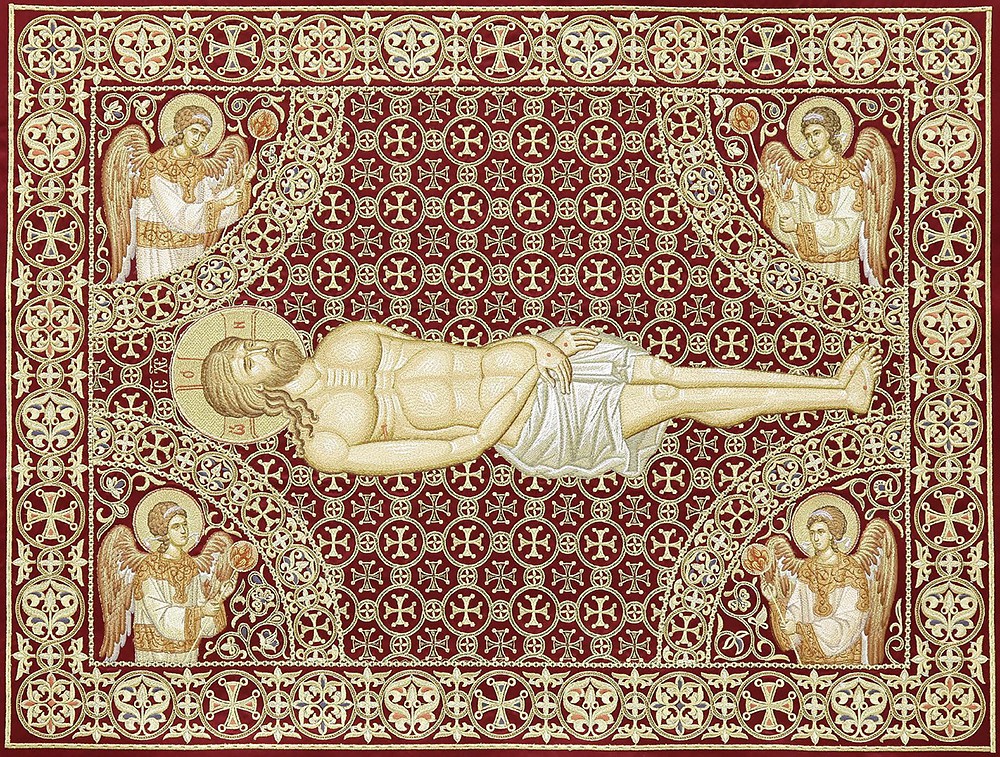
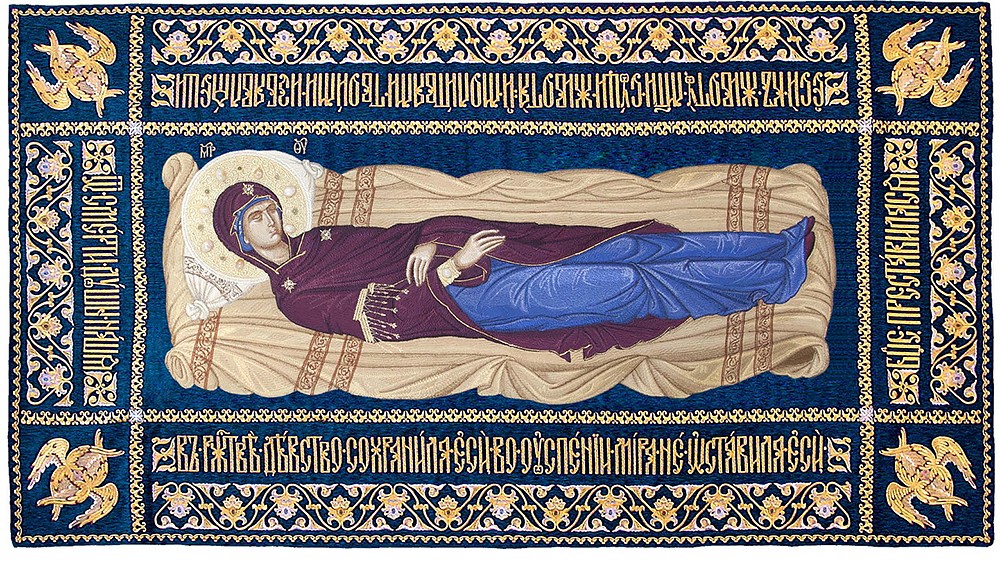
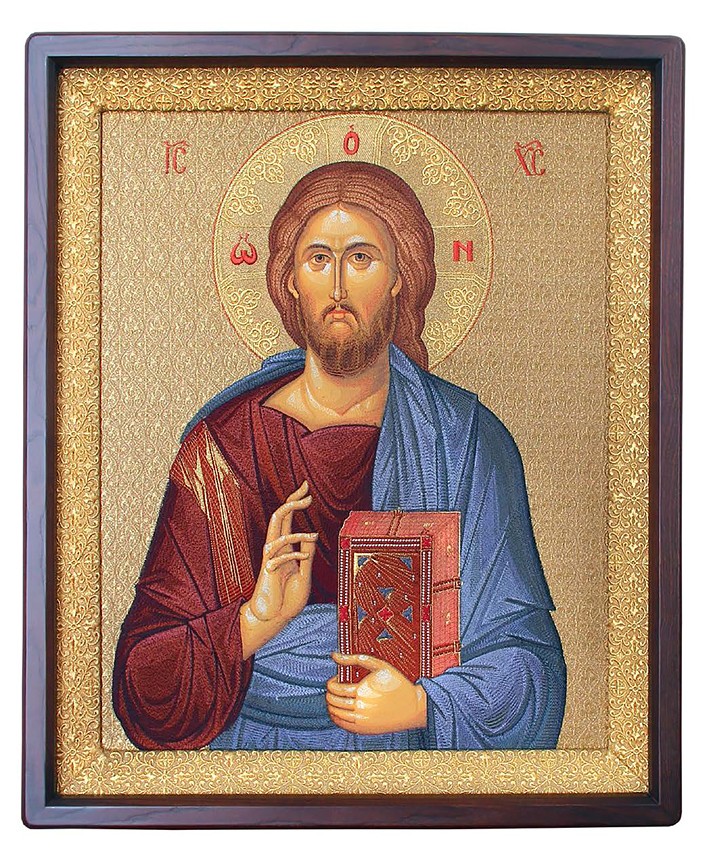
Mother of God to cover you
I've placed it in a public folder on Photobucket: http://s164.photobucket.com/user/MQubed/media/Altar%20Relic/AltarRelic-Text.png.html
I appreciate any help you can give!
Blessings,
Michelle